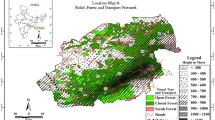Abstract
We have analyzed 10 unlinked microsatellites and a linked Alu deletion polymorphism at the CD4 locus in an African American population sample from Chicago (USA). Heterozygosity estimates at the microsatellite loci range from 0.727±0.025 (D3S1358) to 0.873±0.017 (D18S51), with an average of 0.794±0.016. These values are comparable to or higher than those reported for Europeans, with only one exception (D3S1358). The CD4/Alu haplotypic diversity (0.887±0.012) is comparable to diversity levels observed in sub-Saharan African populations and is higher than the diversity levels reported in European populations. No consistent pattern of within, between, or multi-locus deviations from Hardy-Weinberg expectations is observed, suggesting a low sub-heterogeneity within the sampled population. We have applied a maximum likelihood method and estimated the proportion of European admixture to the African American gene pool to be 0.26±0.02. The narrow confidence interval indicates that allele frequency data from multiple microsatellite loci, whether analyzed independently or as haplotypes, are particularly useful for estimating genetic admixture.
Similar content being viewed by others
Author information
Authors and Affiliations
Additional information
Received: 9 September 1998 / Accepted: 3 November 1998
Rights and permissions
About this article
Cite this article
Destro-Bisol, G., Maviglia, R., Caglià, A. et al. Estimating European admixture in African Americans by using microsatellites and a microsatellite haplotype (CD4/Alu). Hum Genet 104, 149–157 (1999). https://doi.org/10.1007/s004390050928
Issue Date:
DOI: https://doi.org/10.1007/s004390050928




